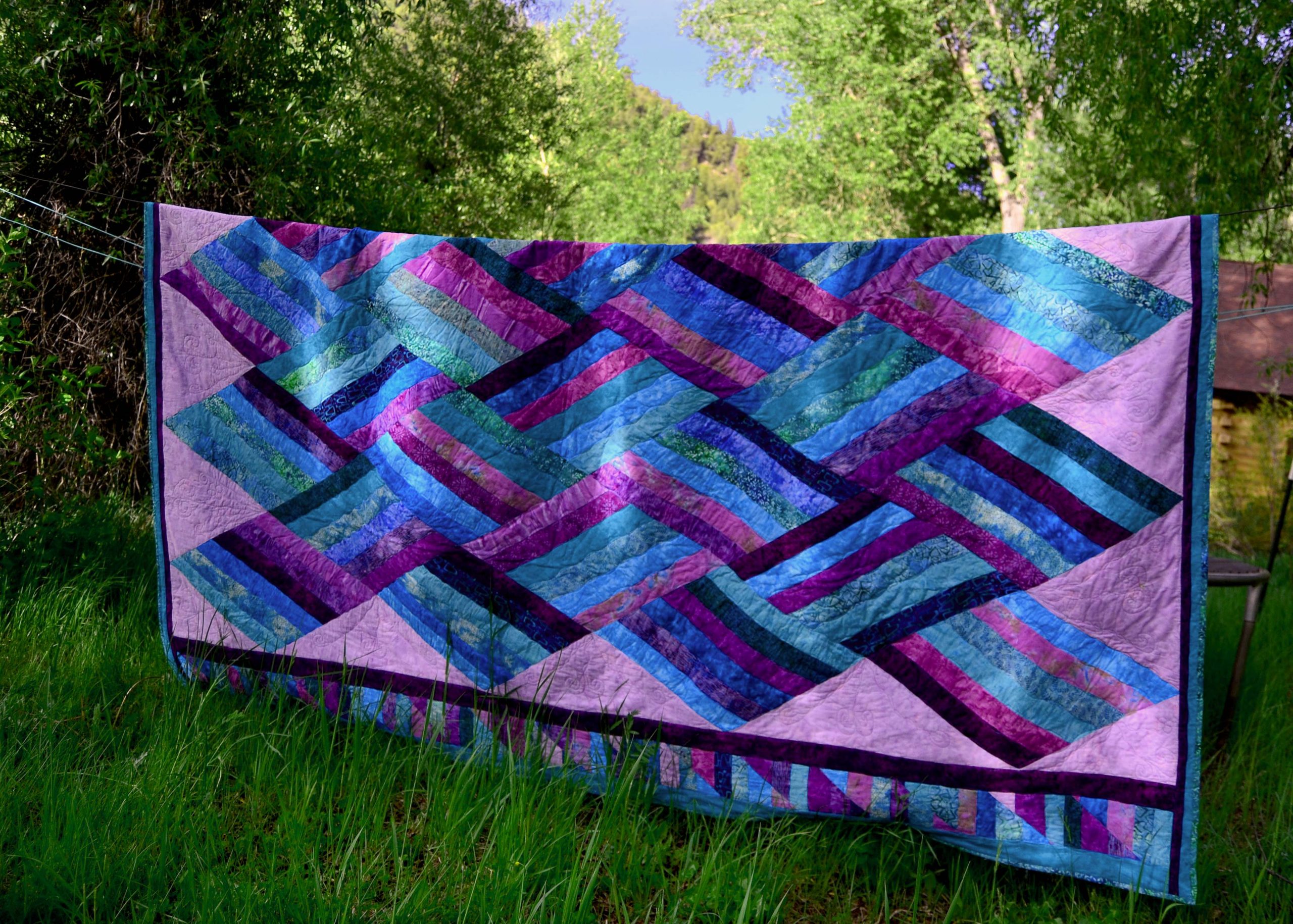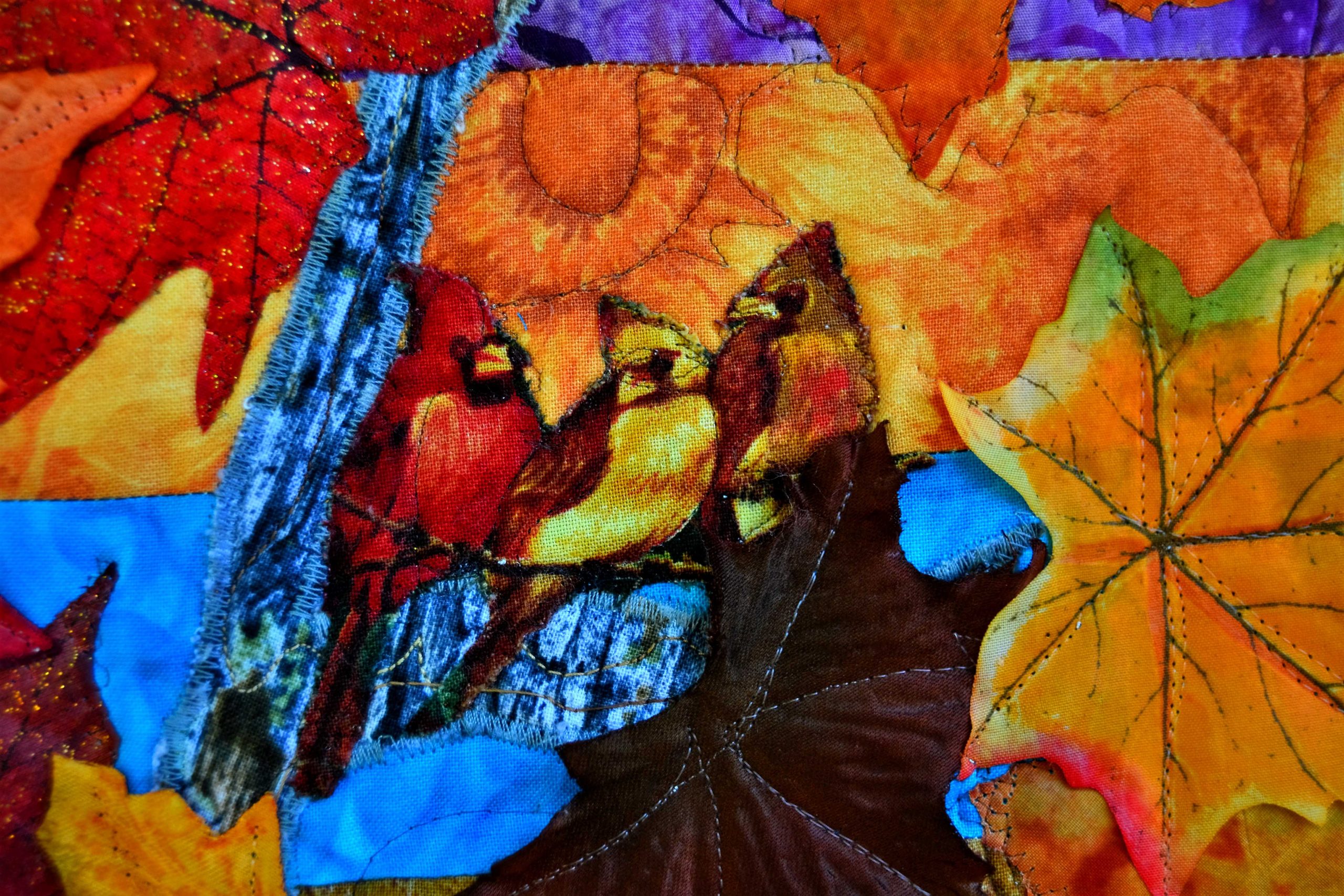Art calls to every human soul on some fundamental level.
Everyone wants to experience life through another perspective – to be able to enjoy a moment of what would have otherwise been a fleeting beauty, or a wonder of the imagination that could have been locked away forever.
Not everyone feels worthy of creating that beauty, however.
If you’re not a master, then you can feel like your interpretation, your perspective, is not as valuable as someone who paints or sculpts for a New York gallery.
And maybe that’s true if you want to be a painter or a sculptor. Those are very competitive fields, after all, with defined rules, periods, and histories.
Princess Yellow Belly and her friends don’t hang things in New York art galleries. They’re free spirits – not geniuses. They’re just ordinary designers, ordinary lovers of beauty, who want to claim a small piece of that beauty for themselves.
Maybe that’s why they went into fabric art.
There aren’t so many rules for fabric art. And there are a lot of different styles available. Fabric art can be interpreted in many different ways, with a lot of different materials, and no piece will ever be identical to another.
All the same, fabric art can be tricky.
Doing something that you don’t enjoy, or attempting something a level beyond your current skill level is a good way to get frustrated, or even fail.
Discover Fabric Artist Styles
Fabric art should be fun – and you won’t have any fun if you’re trying to use techniques that don’t jam with your personality.
There are a couple of different quilter/fabric artist types out there:
-
The Elegant Precisionist
This quilter is also known as the traditionalist quilter. Amish quilting ladies are a beautiful example of this style.
Being an elegant precisionist means that you are drawn to traditional, often complicated, patterns and colors.
Elegant Precisionists enjoy things like:
- Paper piecing (super finicky)
- Those little dash-marks between the quart inches
- Powerful patterns with liquid or traditionalist colors
An Elegant will also often be at an intermediate, if not an expert, level. Beginners might be drawn to patterns like simple Dresden Plates, Log Cabins, and Flying Geese.
If you are at an intermediate or an advanced level of ability, then it probably means that you are drawn to complex patterns that require finicky techniques and a lot of time – a paper-pieced Mariner’s Star is an excellent example of an Advanced Elegant Precisionist’s domain.

-
The Modern Precisionist
This type of quilter still likes to follow patterns with precise instructions and predictable outcomes – but unlike the Elegant Precisionist is drawn to modernistic, contemporary, avant-garde type patterns.
- Modern Precisionists like box inside circles, or vice versa
- Striking colors like orange and black, yellow and white, neon blue and gray
- Jarring patterns that knock people out of their comfort zones and demand attention
Modernists can be anywhere between beginner and advanced, although many are intermediate since the patterns are often not as technical as traditional formats, and also allow more room for error.

-
The Flower-Child
Yes, there is a quilting style for the freedom-loving, flower-wearing, lots-of-colors person.
Flower-children like:
- Flowers
- Flowing rainbow colors
- Glitz and sparkle
- Patterns that are more impressionistic than realistic
Flower-children often hover between the beginner and intermediate levels of quilting because the patterns they are drawn to does not require nearly as much finicky care as any precisionist. However, no one adds accessories like a flower-child, either.
Appliques, crystals, buttons, ribbons, and glitzy items of all kinds can be found in this type of fabric art.

-
The Mad Scientist
A mad scientist quilter ignores rules and conventions. A mad scientist is unable to conform and simply settle for what has already been done. Free-spirit meets insane experimentation. Mad scientists often
- Dye their own fabrics
- Put different weights and types of fabric – like satin and velvet –for no apparent reason
- Combine or reimagine existing patterns to create something wholly unique
The skill level of a mad scientist can be hard to pin down, because some are drawn to complex designs, and some are drawn to simple, but the amount of knowledge they assimilate is huge! A mad scientist is definitely more than a hobbyist.

-
The Magician
Unfortunately magician quilters don’t have the ability to blink their eyes twice and produce a perfect quilt.
Magician quilters are driven to create a feeling of magic in their quilted works of art. Very often a magician quilter is drawn to
- Landscapes
- Romantic tableaus
- Powerful imagery
A magician often combines elements of reality and romance because they take something real, like a landscape, and add a layer of imagery that could not exist in the real world.
Magicians also tend to combine elements of the other styles. Elegance in colors schemes, striking patterns, multiple accessories and appliques, as well as the occasional “experiment-gone-wrong” can occur.
Magicians, like mad scientists, also have a skill level that is hard to determine. Technical skill can be low – but the learning curve on each project can be steep.

Discover Your Style
What breed of creative fabric genius are you?
If one of those styles really clicked with you, then go ahead and skip to the next section – otherwise, you can take this test.
-
What is your idea of a perfect day?
Is it taking a beach vacation, or going to the theater? Do you like to spend time with your kids or do community projects? Maybe the thing you most desire is a hot bath?
-
What are your other hobbies?
For instance, do you do any woodworking? Do you cook in your spare time? Are you an OCD house-cleaner? Do you garden?
-
What are your three favorite colors?
Color combinations are essential to quilting.
-
What is your tolerance for details?
Another way to look at this is, are you mechanical? People who enjoy math and science, or are a little obsessive tend to be better at mechanical and technical trades – if you can’t even screw in a light-bulb, then your detail tolerance is most likely pretty low.
-
How much do you enjoy learning new things?
Some people really enjoy learning something new every day. Others are a little too busy, or simply enjoy doing things they know they’re good at.
Discover Your Skill-Level
There are several different skill levels, but we’ll stick with the three basics:
- Beginner
- Intermediate
- Advanced
As you grow and learn in your fabric art journey you will naturally evolve from complete beginner to whatever unique skill level best fits you.
It is possible, for example, to be an expert quilter, and yet be unable to complete certain patterns.
A good friend of ours, Barb, is an advanced quilter. She is a brilliant artisan, an incredible seamstress, and yet she cannot do free-motion quilting. Barb is continually turning out unbelievably complex patterns that we would never attempt, yet she always quilts in the ditch.
So don’t feel bad when there’s a project or technique that you just can’t get. People’s minds work in different ways, and some things simply don’t channel.
Quilting and fabric art is supposed to be fun, a creative outlet, not a trial to your soul.
So, with that said, here’s some guidelines to determine your basic skill levels:
-
How much experience with fabric and thread do you have?
Count everything here.
- Embroidery – which is very helpful to understand applique and stained glass techniques
- Clothes sewing – a seamstress will have very little difficulty adapting the “inside-out-and-backwards” thinking needed to do more complex precision patterns
- Yarn arts – crochet and knitting takes a lot of technical knowledge, plus you have the ability to read and understand stylistic instructions
- Mending – again, this can be useful for understanding applique, but it is also helpful in understanding basics like ripping out a seam and fabric types
You can build quite a lot of prowess from what you already know – so be careful to include your knowledge when considering a new pattern or project.
-
How well do you read patterns?
Much like playing music, being able to read a pattern will vastly simplify learning new skills and making projects.
Most patterns, either on the title page or in the sales catalog, will have a difficulty rating. So if you read a pattern and either understand it or are bewildered by it, look at the skill rating.
Of course, there are exceptions. Much like a musician who plays by ear, a very few seamstresses will not read patterns at all – so make sure to take that (somewhat rare) possibility into account.
-
Happy to be a Terminal Intermediate
There are a few fabric artists who will, eventually, ascend to the level of an advanced quilter, or even beyond that to true mastery. These are the pattern-creators, the teachers, the gurus of our sphere.
For the most part, however, a truly dedicated fabric artist will settle somewhere in the intermediate category.
And that is all right.
Intermediate quilters tend to pick a trend they like, and stick there.
Whatever you are, and wherever you are, in your fabric art journey – make sure that it pleases you. Fabric art isn’t one of those things that comes from suffering, but from joy.













